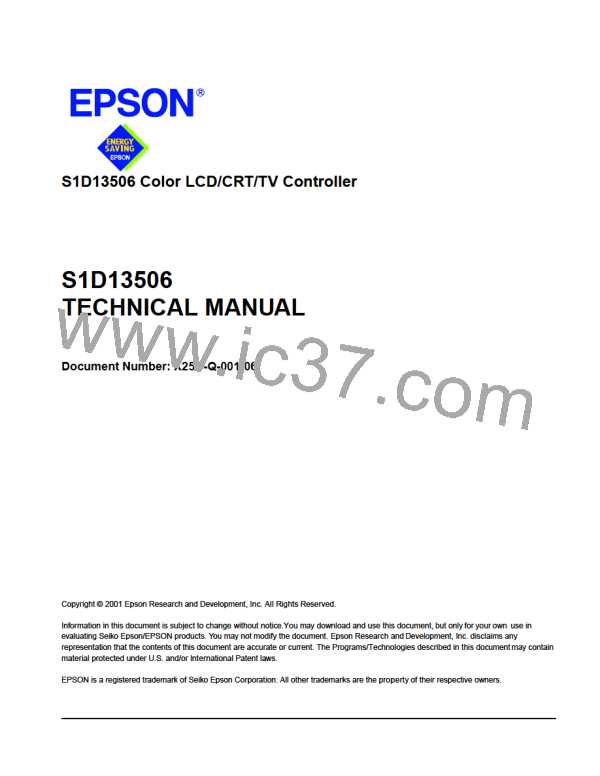Epson Research and Development
Page 201
Vancouver Design Center
15 SwivelView™
15.1 Concept
Most computer displays are refreshed in landscape – from left to right and top to bottom.
Computer images are stored in the same manner. SwivelView™ is designed to rotate the
displayed image on an LCD by 90°, 180°, or 270° in a clockwise direction. The rotation is
done in hardware and is transparent to the user for all display buffer reads and writes. By
processing the rotation in hardware, SwivelView™ offers a performance advantage over
software rotation of the displayed image.
15.2 90° SwivelView™
90° SwivelView™ uses a 1024 × 1024 pixel virtual window. The following figures show
how the display buffer memory map changes in 90° SwivelView™. The display is
refreshed in the following sense: C–A–D–B. The application image is written to the
S1D13506 in the following sense: A–B–C–D. The S1D13506 rotates and stores the
application image in the following sense: C–A–D–B, the same sense as display refresh.
The user can read/write to the display buffer naturally, without the need to rotate the image
first in software. The registers that control the panning and scrolling of the panel window
are designed for a landscape window. However, it is still possible to pan and scroll the
portrait window in 90° SwivelView™, but the user must program these registers somewhat
differently (See Section 15.2.1, “Register Programming” on page 202).
1024 pixels
B
1024 pixels
A
display
start
address
H
portrait
window
W
W
D
C
H
Rotated image in the display buffer
Figure 15-1: Relationship Between Screen Image and 90° Rotated Image in the Display Buffer
Image seen by the user
Hardware Functional Specification
Issue Date: 01/02/06
S1D13506
X25B-A-001-10

 EPSON [ EPSON COMPANY ]
EPSON [ EPSON COMPANY ]